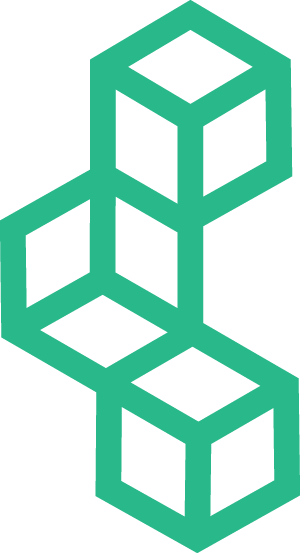Digital transformation dominated the Facilities Management sector in 2018. When it comes to improvements around quality, production, and longevity of physical assets, digital transformation is an unfolding revolution set to continue throughout 2019. Here, we discuss the top Facility Management technology trends to watch.
These are the Top 5 Facility Management Technology Trends to Watch in 2019
BIM for Facility Managers
This is one of the top tech tools on our radar in 2019. BIM offers a considerable opportunity to improve collaboration and communication for facility managers.
Traditionally used by contractors and architects, Building Information Modeling (BIM) is a tool for developing and scaling virtual models of building projects. While BIM is not a new technology, it is increasingly becoming commonplace in the facility management sector.
BIM offers Facility Managers the most complete visual model of facilities, assets, and infrastructure. Facility professionals harness the power of these tools for project management, delivery, and data accessibility. When integrated with existing work order programs or facility maintenance software, facility teams realize an improved ability to retrieve accurate asset information and insights.
Drones for Facility Condition Assessments
Drone technology is rapidly advancing. It is becoming more efficient and less expensive. Imagine performing roof inspections without wasting time or money on scaffolding—this is one of the significant benefits that drones offer owners and operators of facilities and infrastructure.
We predict that building and infrastructure owners and operators will begin integrating drones for aerial surveillance of buildings and outdoor spaces in the coming years. This will allow security personnel to monitor large areas more effectively.
While commercial-use drone technology is still emerging, and many safety considerations must be sorted, there have been successful examples of drones surveying historical sites in NYC. This denotes a promising future for using drones to perform complicated condition assessments.
Drones will bring unprecedented opportunities for improved efficiency in facility management. One of the most significant benefits of implementing drones during facility condition assessments is the increased safety and automation offered. While drone use may not be widespread across the industry in 2019, we expect a surge in popularity from CRE executives in the years to come.
Data Gets Even More Mobile
The rise of mobile technology frees Facilities Managers from their desks. It lets managers gain greater diversity in their work environments with the ability to oversee multiple locations from a single place.
Organizations have been going paperless since the late 90s, and tablets and smartphones have made printed work orders and paper records obsolete on the job history. Instead, facility professionals can easily access all the information they need on an asset and how to perform a repair readily available through their browser-based facility management system (FMS).
Transitioning to a digital workflow is more efficient because work orders, asset locations, and maintenance updates are easily accessed, shared, and updated. This eliminates downtime playing phone tag and commuting to multiple sites to check on repairs.
Facility Optimization with Machine Learning and IoT
Facility Optimization has evolved far beyond simply managing energy consumption as a tactic to improve the bottom line. Innovative tech and software platforms have revolutionized it, focusing on enhanced asset performance, connected buildings, and preventive maintenance management.
Internet-connected devices generate datasets for buildings that have never existed – and can now be leveraged through machine learning. Building owners, managers, and engineers will use machine learning to sift through data and unlock insights into market trends, building performance optimization, and other big-data applications.
The benefits of automation are boundless. Rather than relying on tenants or facility team members to constantly monitor temperature levels, the influx of work orders, or switching off the lights, a centralized Building Automation System (BAS) will seamlessly and automatically monitor these essential functions.
Furthermore, because these systems continually collect data, you can optimize your physical assets based on real-time insights. This allows your facilities management team to analyze usage patterns, which in turn gives you the power to develop strategies for saving money and improving efficiency throughout your entire asset portfolio.
In 2019, we predict that the Facility Management industry will spend significantly less time manually collecting data and more time moving toward optimization goals with the help of IoT, Building Automation, and Machine Learning.
Blockchain Buzz
Recently, there has been much buzz about the benefits of Blockchain for the facilities management sector. Blockchain, the technology used to track activities and actions within a system, is becoming a more critical part of the technology used in facilities management.
According to the Professional Retail Store Maintenance Association (PRSM), blockchain Blockchain centralized contract management, work order processing, payment processing, facility management, and maintenance needs tracking and increased overall facility transparency.
Data stored in a Blockchain has the potential to be quickly and easily reviewed, even when maintained by separate departments. It provides a fast and accurate data analysis. Further, highly confidential or proprietary data is far more secure because of Blockchain'Blockchain'srce of shared truth.
An advantage of Blockchain Blockchain is that it will streamline processes and lower costs through the reduction and/or elimination of those dreaded manual operations. This could be adapted to almost any procedure, including preventive maintenance, work orders, environmental health and safety planning, and space management.
While the widespread implementation of Blockchain Blockchain is a long way off, it is still a good idea to invest time and energy into evaluating and researching how this exciting new technology could be implemented. At Intellis, it is never too early to start identifying areas where recent developments can improve technology.
Conclusion
Central to our mission is the commitment to implementing the latest tech advancements in our enterprise solutions, such as FOUNDATION, so that we can provide our clients with the best software solutions that ensure healthy building and infrastructure operations while reducing costs, improving productivity, and boosting sustainability.
Software solutions such as FOUNDATION help businesses better organize their facility management departments, which leads to less unplanned downtime, higher productivity, and better overall business performance. When facility managers move from managing inspection and maintenance with paper, pen, and clipboards to implementing software solutions such as FOUNDATION, customers can reduce costs by seven to nine times.
The FOUNDATION software platform is part of this revolution, and these exciting new developments will change the facility management industry. With FOUNDATION, you will be well-equipped to be at the forefront of this wave of digital transformation.
Would you be ready to learn more?


